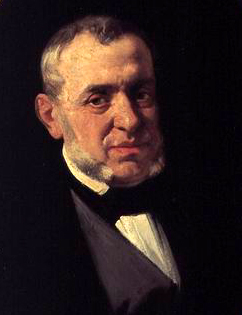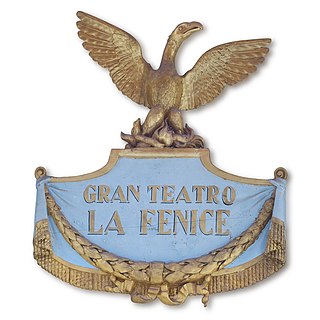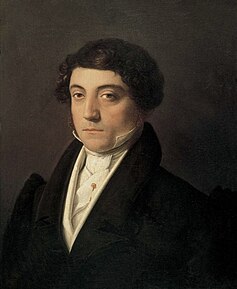 W
WAttila is an opera in a prologue and three acts by Giuseppe Verdi to an Italian libretto by Temistocle Solera, based on the 1809 play Attila, König der Hunnen by Zacharias Werner. The opera received its first performance at La Fenice in Venice on 17 March 1846.
 W
WBeatrice di Tenda is a tragic opera in two acts by Vincenzo Bellini, from a libretto by Felice Romani, after the play of the same name by Carlo Tedaldi Fores.
 W
WBelisario (Belisarius) is a tragedia lirica in three acts by Gaetano Donizetti. Salvadore Cammarano wrote the Italian libretto after Luigi Marchionni's adaptation of Eduard von Schenk's play, Belisarius, first staged in Munich in 1820 and then in Naples in 1826. The plot is loosely based on the life of the famous general Belisarius of the 6th century Byzantine Empire.
 W
WLa bohème is an Italian opera in four acts, with music and libretto by Ruggero Leoncavallo, based on Scènes de la vie de bohème (1851) by Henri Murger. The opera received a successful premiere at the Teatro la Fenice, Venice on 6 May 1897.
 W
WI Capuleti e i Montecchi is an Italian opera in two acts by Vincenzo Bellini. The libretto by Felice Romani was a reworking of the story of Romeo and Juliet for an opera by Nicola Vaccai called Giulietta e Romeo and based on the play of the same name by Luigi Scevola written in 1818, thus an Italian source rather than taken directly from William Shakespeare.
 W
WCaritea, regina di Spagna, ossia La morte di Don Alfonso re di Portogallo, is an opera in two acts by Saverio Mercadante, with a libretto by Paolo Pola. It was premiered at Teatro La Fenice in Venice on 21 February 1826.
 W
WCarlo di Borgogna is an Italian opera in three parts composed by Giovanni Pacini to a libretto by Gaetano Rossi. It was first performed at the Teatro la Fenice, Venice, on 21 February 1835.
 W
WIl crociato in Egitto is an opera in two acts by Giacomo Meyerbeer, with a libretto by Gaetano Rossi. It was first performed at La Fenice theatre, Venice on 7 March 1824. The part of Armando was sung by the famous castrato, Giovanni Battista Velluti; the opera was probably the last written to feature a castrato. It is the last of Meyerbeer's series of operas in Italian, and became the foundation of the composer's international success.
 W
WErnani is an operatic dramma lirico in four acts by Giuseppe Verdi to an Italian libretto by Francesco Maria Piave, based on the 1830 play Hernani by Victor Hugo.
 W
WTeatro La Fenice is an opera house in Venice, Italy. It is one of "the most famous and renowned landmarks in the history of Italian theatre" and in the history of opera as a whole. Especially in the 19th century, La Fenice became the site of many famous operatic premieres at which the works of several of the four major bel canto era composers – Rossini, Bellini, Donizetti, Verdi – were performed.
 W
WMaria de Rudenz is a dramma tragico, or tragic opera, in three parts by Gaetano Donizetti. The Italian libretto was written by Salvadore Cammarano, based on "a piece of Gothic horror", La nonne sanglante by Auguste Anicet-Bourgeois and Julien de Mallian, and The Monk by Matthew Gregory Lewis. It premiered at La Fenice in Venice, on 30 January 1838.
 W
WGli Orazi e i Curiazi is an opera in three acts composed by Domenico Cimarosa to a libretto by Antonio Simeone Sografi, based on Pierre Corneille's tragedy Horace.
 W
WThe Rake's Progress is an English-language opera in three acts and an epilogue by Igor Stravinsky. The libretto, written by W. H. Auden and Chester Kallman, is based loosely on the eight paintings and engravings A Rake's Progress (1733–1735) of William Hogarth, which Stravinsky had seen on 2 May 1947, in a Chicago exhibition.
 W
WRigoletto is an opera in three acts by Giuseppe Verdi. The Italian libretto was written by Francesco Maria Piave based on the 1832 play Le roi s'amuse by Victor Hugo. Despite serious initial problems with the Austrian censors who had control over northern Italian theatres at the time, the opera had a triumphant premiere at La Fenice in Venice on 11 March 1851.
 W
WSemiramide is an opera in two acts by Gioachino Rossini. The libretto by Gaetano Rossi is based on Voltaire's tragedy Semiramis, which in turn was based on the legend of Semiramis of Assyria. The opera was first performed at La Fenice in Venice on 3 February 1823.
 W
WSigismondo is an operatic 'dramma' in two acts by Gioachino Rossini to an Italian libretto by Giuseppe Maria Foppa.
 W
WSimon Boccanegra is an opera with a prologue and three acts by Giuseppe Verdi to an Italian libretto by Francesco Maria Piave, based on the play Simón Bocanegra (1843) by Antonio García Gutiérrez, whose play El trovador had been the basis for Verdi's 1853 opera, Il trovatore.
 W
WTancredi is a melodramma eroico in two acts by composer Gioachino Rossini and librettist Gaetano Rossi, based on Voltaire's play Tancrède (1760). The opera made its first appearance at the Teatro La Fenice in Venice on 6 February 1813, and because Il signor Bruschino premiered in late January, the composer must have completed Tancredi in less than a month. The overture, borrowed from La pietra del paragone, is a popular example of Rossini's characteristic style and is regularly performed in concert and recorded.
 W
WLa traviata is an opera in three acts by Giuseppe Verdi set to an Italian libretto by Francesco Maria Piave. It is based on La Dame aux camélias (1852), a play adapted from the 1848 novel by Alexandre Dumas fils. The opera was originally titled Violetta, after the main character. It was first performed on 6 March 1853 at La Fenice opera house in Venice.
 W
WThe Turn of the Screw is a 20th-century English chamber opera composed by Benjamin Britten with a libretto by Myfanwy Piper, "wife of the artist John Piper, who had been a friend of the composer since 1935 and had provided designs for several of the operas". The libretto is based on the 1898 novella The Turn of the Screw by Henry James. The opera was commissioned by the Venice Biennale and given its world premiere on 14 September 1954, at the Teatro La Fenice, Venice. The original recording was made during that year, with the composer conducting.